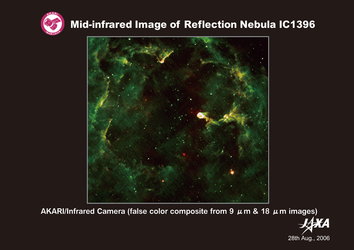Accept all cookies Accept only essential cookies See our Cookie Notice

About ESA
The European Space Agency (ESA) is Europe’s gateway to space. Its mission is to shape the development of Europe’s space capability and ensure that investment in space continues to deliver benefits to the citizens of Europe and the world.
Highlights
ESA - United space in Europe
This is ESA ESA facts Member States & Cooperating States Funding Director General Top management For Member State Delegations European vision European Space Policy ESA & EU Space Councils Responsibility & Sustainability Annual Report Calendar of meetings Corporate newsEstablishments & sites
ESA Headquarters ESA ESTEC ESA ESOC ESA ESRIN ESA EAC ESA ESAC Europe's Spaceport ESA ESEC ESA ECSAT Brussels Office Washington OfficeWorking with ESA
Business with ESA ESA Commercialisation Gateway Law at ESA Careers Cyber resilience at ESA IT at ESA Newsroom Partnerships Merchandising Licence Education Open Space Innovation Platform Integrity and Reporting Administrative Tribunal Health and SafetyMore about ESA
History ESA Historical Archives Exhibitions Publications Art & Culture ESA Merchandise Kids Diversity ESA Brand Centre ESA ChampionsLatest
Space in Member States
Find out more about space activities in our 23 Member States, and understand how ESA works together with their national agencies, institutions and organisations.
Science & Exploration
Exploring our Solar System and unlocking the secrets of the Universe
Go to topicAstronauts
Missions
Juice Euclid Webb Solar Orbiter BepiColombo Gaia ExoMars Cheops Exoplanet missions More missionsActivities
International Space Station Orion service module Gateway Concordia Caves & Pangaea BenefitsLatest
Space Safety
Protecting life and infrastructure on Earth and in orbit
Go to topicAsteroids
Asteroids and Planetary Defence Asteroid danger explained Flyeye telescope: asteroid detection Hera mission: asteroid deflection Near-Earth Object Coordination CentreSpace junk
About space debris Space debris by the numbers Space Environment Report In space refuelling, refurbishing and removingSafety from space
Clean Space ecodesign Zero Debris Technologies Space for Earth Supporting Sustainable DevelopmentLatest
Applications
Using space to benefit citizens and meet future challenges on Earth
Go to topicObserving the Earth
Observing the Earth Future EO Copernicus Meteorology Space for our climate Satellite missionsCommercialisation
ESA Commercialisation Gateway Open Space Innovation Platform Business Incubation ESA Space SolutionsLatest
Enabling & Support
Making space accessible and developing the technologies for the future
Go to topicBuilding missions
Space Engineering and Technology Test centre Laboratories Concurrent Design Facility Preparing for the future Shaping the Future Discovery and Preparation Advanced Concepts TeamSpace transportation
Space Transportation Ariane Vega Space Rider Future space transportation Boost! Europe's Spaceport Launches from Europe's Spaceport from 2012Latest

Mass-loss from young red-giants in globular cluster NGC 104
This image shows the globular cluster NGC104 (also known as 47 Tuc), located at an estimated distance of around 15000 light years from us, visible from the southern hemisphere in the constellation of Tucana. The object was observed with the Near- and Mid-Infrared Camera (IRC) on board AKARI, at 3, 4, 7, 11, 15, and 24 micrometres. It shows evidence of high-rate mass-loss from young red-giant stars. This image is a three-colour composite of the target, observed at 3, 11, and 24 micrometres.
Globular clusters are dense spherical groups of about one million stars. NGC104 is thought to have formed about 11 thousand million years ago (approximately the age of the Milky Way). The massive stars in the cluster have long burnt out, and those that currently light the cluster are of mass similar to that of our Sun - or rather to what our Sun will evolve into approximately 6 thousand million years from now.
The stars of NGC 104 with similar mass to our Sun have already extinguished the hydrogen in their cores – the fuel required for nuclear fusion – and proceeded to later stages of stellar evolution to become red-giant stars. Sun-like stars undergo ‘mass-loss’ at this stage: they eject about 40 per cent of their mass into interstellar space becoming ‘white dwarf’ stars. The mass loss in the early red-giant phase, important for understanding the evolution of galaxies, had been predicted only in theory so far.
The bright red stars seen in the image are mostly in the final stages of the red-giant phase with mass loss rates as high as one millionth of their mass per year. Stars in the earlier red-giant phase are seen as slightly darker. The star marked in the bottom-left corner has a high rate of mass loss while still a young red-giant, confirming the presence of mass-loosing younger red-giants for the first time. The presence of other similar young red giants in the cluster without mass-loss implies that the phenomenon in young red-giants is not continuous but rather episodic in nature, occurring sporadically over relative short periods when put into a cosmological context. Further analysis and modelling will enable to the scientists to understand the future evolution of our Sun, and the effect on the Solar System.
-
CREDIT
JAXA -
LICENCE
ESA Standard Licence

Artist’s impression of a red-giant star ejecting matter

AKARI’s far-infrared image of red-giant star U Hydrae

Cosmic fairy lights

IC 4499: A globular cluster’s age revisited















 Germany
Germany
 Austria
Austria
 Belgium
Belgium
 Denmark
Denmark
 Spain
Spain
 Estonia
Estonia
 Finland
Finland
 France
France
 Greece
Greece
 Hungary
Hungary
 Ireland
Ireland
 Italy
Italy
 Luxembourg
Luxembourg
 Norway
Norway
 The Netherlands
The Netherlands
 Poland
Poland
 Portugal
Portugal
 Czechia
Czechia
 Romania
Romania
 United Kingdom
United Kingdom
 Slovenia
Slovenia
 Sweden
Sweden
 Switzerland
Switzerland

























